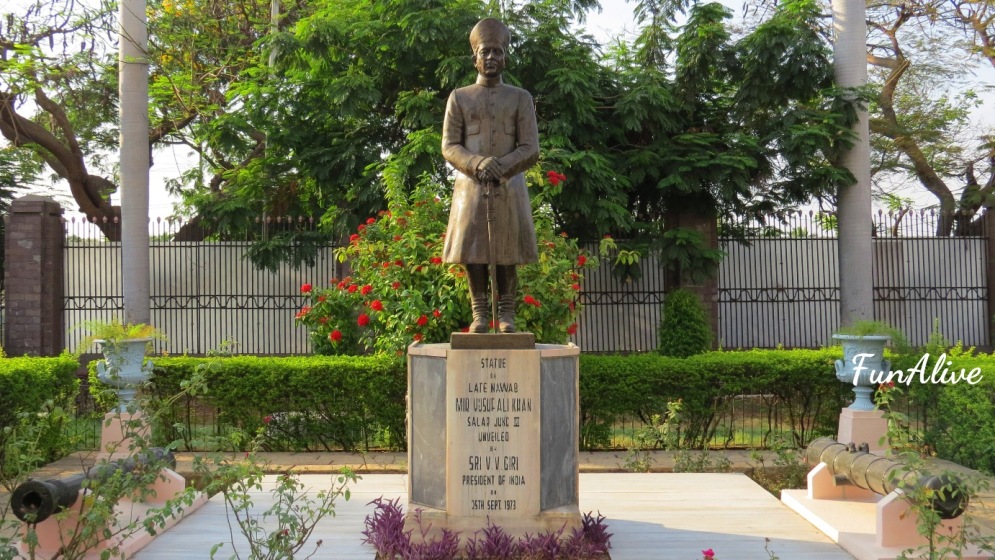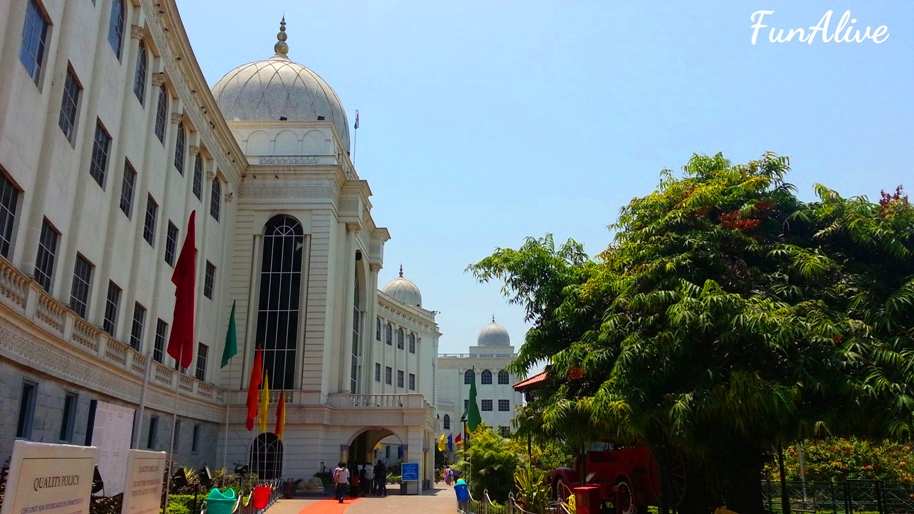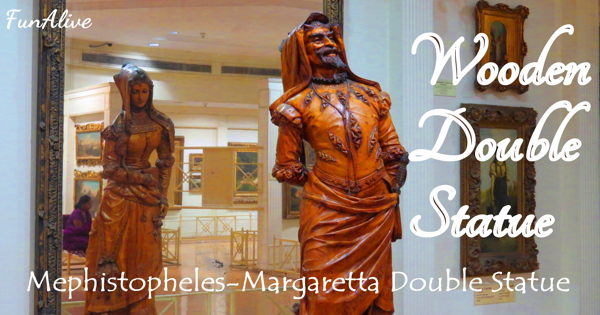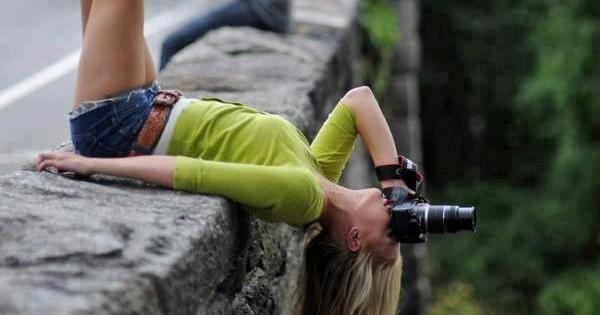Salar Jung Museum - The Treasure Of Hyderabad
- Salar Jung Museum, the third largest national museum of India is probably the only museum of its kind in the world having collections of Nawab Mir Yousuf Ali Khan (1889-1949).
Salar Jung Museum Full Video
Salar Jung Museum, the third largest national museum of India is probably the only museum of its kind in the world having collections of Nawab Mir Yousuf Ali Khan (1889-1949), the erstwhile Prime minister of Nizam, who carried the title of Salar Jung III being third in succession of a noble family serving Nizam's state in south-central India.
History:

Salar Jung III:
The major portion of this collection was acquired by Nawab Mir Yousuf Ali Khan popularly known as Salar Jung III. The zeal for acquiring art objects continued as a family tradition for three generations of Salar Jungs.
In 1914, Salar Jung III, after having relinquished the post of Prime Minister to H.E.H., the Nizam VII, Nawab Mir Osman Ali Khan, devoted rest of his entire life in collecting and enriching the treasures of art and literature till he lived. The precious and rare art objects collected by him for a period of over forty years, find place in the portals of the Salar Jung Museum, as rare to very rare pieces of art.
With a view to perpetuate the name of Salar Jung as a world renowned art connoisseur, the Salar Jung Museum was brought in to existence and was opened to the public by Pandit Jawaharlal Nehru, the then Prime Minister of India on 16th December, 1951.
Rare Video Of #hyderabadRare Video Of #hyderabad Nizam Era
Posted by Hyderabad City on Thursday, July 12, 2018
Collection of Objects:

The Museum has a magnificent global collection of art objects and antiques not only of Indian origin, but mostly from countries Western, a sizable collection hails from Middle Eastern and Far Eastern origins. Apart from these, there is a Children's section, a rich reference library which contains reference books, large collection of rare manuscripts etc. Thus, this Museum has become popular, not only as a place of interest but also as an institution for education.
Out of the several rare objects, one of the important and interesting object collected by Salar Jung I was “Vellied Rebecca” an enchanting marble statue which was acquired by him from Rome in 1876 during his visit to Italy. The western collection are from England, Ireland, France, Belgium, Italy, Germany. A set of Ivory chairs said to have been presented by Louis XVI of France to Tippu Sultan of Mysore deserve special mention.
A jade book-stand “Rehal” having the name of ‘Shamsuddin Altamish’, an archer’s ring inscribed with the legend Sahib-e-Quran-e-Sani, title of the Mughal Emperor, Shahjahan are masterpieces. A dagger and a fruit knife made in jade decorated with precious stones are said to belong to Jehangir and Noorjehan respectively. A good number of Indian Miniature Paintings in early style of Western India of 14th and 15th Centuries representing Krishna Leela themes are also form part of the Museum’s Collection. There are good number of Arabic and Persian Manuscripts dated to 19th century and Shah-nama by Furadausi are also among the valuable collection of the Museum.
A rare manuscript entitled ‘Lilawati” on mathematics and an ancient medical encyclopedia transcribed in India is in the collection. Oil and water paintings form an important part of the European collections.

The present museum building was constructed on the southern bank of River Musi, which is in close proximity to the important monuments of old city of Hyderabad like the historic Charminar, Mecca Masjid etc. The collections of the Museum and the library were transferred from Dewan Deodi to the new building in the year 1968, and two more buildings were added in the year 2000.
2000 Year Old Ancient Bronze Sculptures and Dancing Nataraja Statues
Mughal Empire Period Jade collection - wine cups, sword and daggers
Jade Room Gallery:
Jade is a semi precious stone, varies in colour from almost pure white, emerald green to a dark black green. The term jade includes Nephrite and Jadeite. The collection includes wine cups (plain and studded with precious stones) plates, cups, book stands belt buckles, arm rests, flywhisk handles and hair pins, etc. Most of the Indian jade objects are dated from17th to 19th centuries based on style, decoration and polish and can be said that they were carved during Mughal and later Mughal period.
A jade book-stand having the name of Shamsuddin Iltamish, an archer ring inscribed with the legend “Sahib-e-Kuran-i-Sani” - title of the Mughal Emperor Shahjahan are masterpieces.
A dagger and a fruit knife made of jade decorated with precious stones are said to belong to Jehangir and Noorjehan respectively. Mughal period jade boxes in the collection shaped with exquisite skill depict creeper designs in conventional flower motifs inlaid with precious stones are indeed a proud possession of the museum.
Jade Room:
The pride of the museum is the outstanding Mughal Jade collection, which includes an exquisite, translucent leaf-shaped cup. In India jade carvings developed during the Mughal rule. Attractive objects in white, sea-green, pale green and mostly in Nephrite jade were produced. Book stands, wine cups, mirror backs, sword and dagger handles dominate the Jade collection.
A specialty of the Mughal Jades is the pierced decoration and inlay with precious stones like rubies and emeralds. Displaying this dazzling decorations are few daggers reputed to be belonging to royal personalities like Jehangir and Noor Jehan.
Veiled Rebecca at Salar Jung Museum | 1876's Italian White Marble Sculpture
European Art Gallery:
Salar Jung Museum Marble Statue (Star Attraction) Veiled Rebecca At Salar Jung Museum in Hyderabad.
The Veiled Rebecca is a sculpture created by an Italian sculptor, Giovanni Maria Benzoni in 1876.
The Veiled Rebecca is a sculpture created by an Italian neoclassical sculptor, Giovanni Maria Benzoni, depicting Rebecca. Benzoni is believed to have made four copies of this statue. The one at the Salar Jung Museum, Hyderabad, India, has been described as a melody in marble.
In the Hebrew Bible, Rebecca is the bride of Isaac. She is covered in a transparent veil during their wedding. This sculpture represents innocence and purity as Giovanni Benzoni skillfully creates the appearance of a transparent veil, an outstanding artistic creation.
It is believed that Benzioni made four copies of this statue. One is among the collection at the Salar Jung Museum, Hyderabad (India). There is also a copy at the High Museum of Art in Atlanta, Georgia (USA). Another one, completed in 1866, is in the Berkshire Museum in Pittsfield, Massachusetts (USA).
Wooden Double Statue - (front) Mephistopheles and (back) Margeretta
This piece of impeccable workmanship - Wooden double statue (male figure in the front and female in the back). Double-figure wood sculpture built in the 19th century A.D. in France by Unknown Artist.
It stands before a mirror and shows the facade of a nonchalant Mephistopheles and the image of a demure Margaretta in the mirror.
Carved out of a single block of wood, the famous double statue in Salar Jung Museum showing two life-size figures - Mephistopheles in front and Margaretta at the back–affords great delight to the visitors.
Ancient Ivory Carvings Art Gallery
Ivory is a term usually employed to particularize the tusk of the elephant.
India which has high traditions in ivory carving right from Indus civilization is represented by carved ivory figures from Assam; chessmen, small toys, household articles from Lucknow; intricately carved lamp shade, religious figures, woven ivory mat and replicas of the historical sites from Mysore, all of 19th and 20th centuries.
The Salar Jung Museum has a good collection of ivory carvings from different parts of the world. The collection of ivory gives an excellent idea of ivory as a medium of plastic art.
Experts say that the Chinese have been carrying on ivory carving for more than 3000 years. The Museum’s Chinese ivories of late 18th and 19th centuries include serene human figures. Vividly portrayed birds and other creatures and the intriguing Cantonese concentric balls-ball with in ball affairs. The chessmen, chausar sets of Ivory in the collection form an interesting group. Amongst the objects of European ivory carvings, a set of our ivory chairs said to have been presented by Louis XVI of France to Tipu Sultan of Mysore deserves special mention.
The collection of carved paper cutters also forms a splendid group. The large size paper cutter catches the attention of the onlooker. Apart from the above, there are also procession scenes, delicately carved boxes, fly whisks, figures of animals and bedsteads.
400 Year Old Ivory Carvings Collections From All Around The World
The Japanese, though late entrants in the field of ivory carving, show themselves as expert carvers the proof borne our by the their delicately carved figures painted with designs in gold lacquer and realistic representation of shrines preserved in the Museum.
Though not of the first rate quality some of the late Egyptian ivory figures displayed are coloured brown, an artistic decoration indulged in by ancient Egyptions who had achieved high quality ivory carving before 3000 B.C.
Although ivory carving a was widely practiced during the historical periods of Europe very little carved ivory appears to have ended up in museums except in private collections and far-flung monasteries in Europe. French ivories dominate the 19th and 20th centuries museum collection. French ivories show a variety of social subjects such as beggars. German ivories include beer mugs. English ivories comprise portraits.
Musical Clock At Salar Jung Museum
The English Bracket Clock at Salarjung Museum in Hyderabad is said to have manufactured in England and assembled in Calcutta in the late 19th century. It was acquired by Salar Jung III, Nawab Mir Yousuf Ali Khan (1889-1949) from the Cooke and Kelvey Co. Clock has more than 350 parts. It contains a mechanism by which a small toy figure of a bearded man comes out from the enclosure three minutes before every hour and exactly at 60th minute strikes the gong as per time (eg. Five times at 5′ o clock) and then goes back inside. There is another toy man visible who is a blacksmith seen holding a hammer and striking the seconds without any break. Enriched with nicely wrought metallic mounts, the huge mechanical clock has three dials for day, date and month in addition to chimming every fifteen minutes.
This musical clock is one of the biggest attractions of the museum and daily during the museum timings at every hour people gather in big numbers just to see the striking of the gong by the toy. Watch the video and feel the anxiety of all the visitors to not miss those few seconds.


